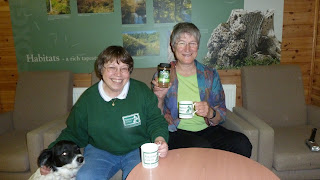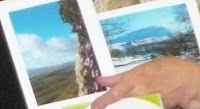Wednesday 25 November: A visit to Foxglove Covert Nature Reserve at Caterick Garrison near Richmond. I arrvied at 12.30 but there were so many paths to explore I didn't get back till almost dark - and then shared a drink of Cool Earth Coffee with one of the volunteers there, and left them a jar to enjoy.
I'd had a good day. At the far end of this pool is the tower hide (above) and a rounder brand new hide below.
Inside it was delightful - brand new wood, not yet made dirty by birdwatchers feet. The building was so symmetrical and peaceful.
There were new paths and new benches.
and new pools and scrapes:-
I
I found the Open air classroom being built ..


































